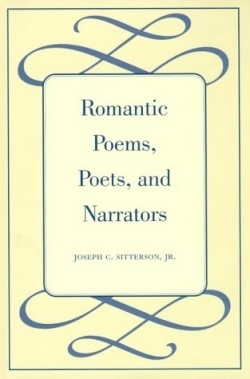Romantic Poems, Poets, and Narrators
If English Romantic poets still dominate the landscape of modern poetry, it is because theirs was the first to dramatize the mind’s interior act of self-creation, of the imagination being self-consciously born into language. They were poets deeply concerned with the notion of originality, of the psychic source of metaphor, the invisible world impinging on the visible. In Wordsworth’s phrase, “Like an unfather’d vapour,” that is, the ego’s need to father itself, even as it was moved by a superior power (deity, Platonism, pantheism).
Like the forbidding peaks of Snowdon in Wordsworth’s “The Prelude,” critical commentary of Blake, Wordsworth, Coleridge and Keats (the four poets’ narrative works considered here) has sprung up, thorny with rival interpretations. New Criticism (now deliberately old-fashioned) maintains its edict to find ultimate poetic unity in a close, closed reading, where all parts fit, like a well wrought urn, into a finished whole. On the other side of the crevasse looms post-structuralism, where the subjective “I” of discourse is merely a linguistic role, a designated speaker, a shape-shifter unreliable narrator of discontinuous moods. Sitterson’s linking theme is how narrative mastery (the Ancient Mariner’s anxious need to re-tell his story; the “dream of the gods” recounted in Keats’s “Lamia”; Blake’s bardic tone of prophecy in the “Songs of Innocence and Experience”) is an inherently flawed dream of the poets, a dream of transcendence that the material world subverts.
It is this “intertwining of insight and uncertainty” that Sitterson (who teaches at Georgetown University) draws out of the poems. That the poets themselves might have anticipated this notion by using narrators and framing devices that mirror this ambiguity within the poems is a point Sitterson makes as well. He is interested in how the various models of reading intersect and spark each other.
Prospective readers might approach this book in reverse, for the chapter notes and sources cited offer an intense reading list of allied criticism. His conclusion, quoting Frank Kermode that “world and book are hopelessly plural, endlessly disappointing; we stand alone before them,” is an intriguing question about the validity of interpretation-a genuine urge not to conquer a work by hammering down its meaning but creating an ongoing engagement with its intent that extends to a new generation of readers. Romantic Poems, Poets, and Narrators has a closely argued, scholarly depth of reflection that is well worth the serious reader’s attention.
Reviewed by
Leeta Taylor
Disclosure: This article is not an endorsement, but a review. The publisher of this book provided free copies of the book to have their book reviewed by a professional reviewer. No fee was paid by the publisher for this review. Foreword Reviews only recommends books that we love. Foreword Magazine, Inc. is disclosing this in accordance with the Federal Trade Commission’s 16 CFR, Part 255.

